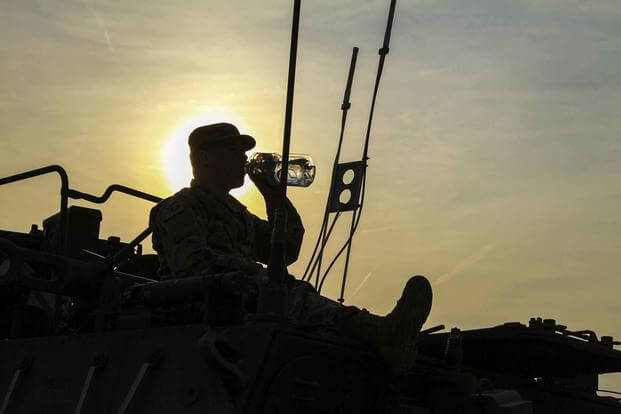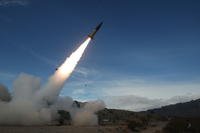More than 100 military bases are at risk of water shortages in an era of climate change, according to a Government Accountability Office report released last week. Some have already experienced water restrictions.
The GAO report to the Senate Armed Services Committee identified 102 bases vulnerable to "not having sufficient water available to meet their mission needs" for drinking, training, weapons testing, fire suppression and sanitation.
The list of bases cited by the report was not limited by geographical area and ranged from Fort Bragg, North Carolina, and Marine Corps Air Station Beaufort, South Carolina in the East to Vandenberg Air Force Base, California, and Camp Pendleton, California in the West.
Some of the bases on the list are already experiencing water shortages or have been warned by local authorities that their access to water sources could be restricted, according to the report.
Related: Pentagon Ranks Utah Base as Most at Risk in Climate Change
Officials at Mountain Home Air Force Base, Idaho, stated that water use on the installation was significantly curtailed in 2017 and 2018, and could be restricted again in 2019, "due to the inability to produce sufficient quantities of water to meet demand," the GAO said.
At F.E. Warren Air Force Base in Wyoming, officials said drought is a continuing threat, and city officials in nearby Cheyenne have warned that they may have to impose water restrictions on the installation if the area does not receive more rain and snowmelt.
Officials from Marine Corps Air Station Yuma, Arizona, also stated that future mission activities could be impacted by water scarcity, "especially as the population of the installation continues to grow with the arrival of additional air squadrons."
The GAO report did not dwell on the debate over climate change, but cited the 2018 Fourth National Climate Assessment by the U.S. Global Change Research Program, the leading federal authority on global change science, which reported that warming temperatures will continue to cause worsening droughts and the decline of surface water quality.
Despite the known risks, the Defense Department may not have reliable information on which installations are at risk for water scarcity, according to the report.
It said that the GAO's comparison of Office of the Secretary Defense assessments of water shortage risk to separate assessments conducted by the military branches found that "they varied markedly, raising questions about their quality" and the sources of information used to conduct them.
The Defense Department should consider whether to conduct a new department-wide assessment, or rely on the reports of the military branches, to get a better analysis of the risks of water scarcity at installations, the report recommended.
In its response, the Defense Department concurred with the GAO's recommendation.
The full GAO report and the list of at-risk bases can be seen here.
-- Richard Sisk can be reached at Richard.Sisk@Military.com.
Read More: US Military Makes Bold Statement in First-of-its-Kind Exercise with India













